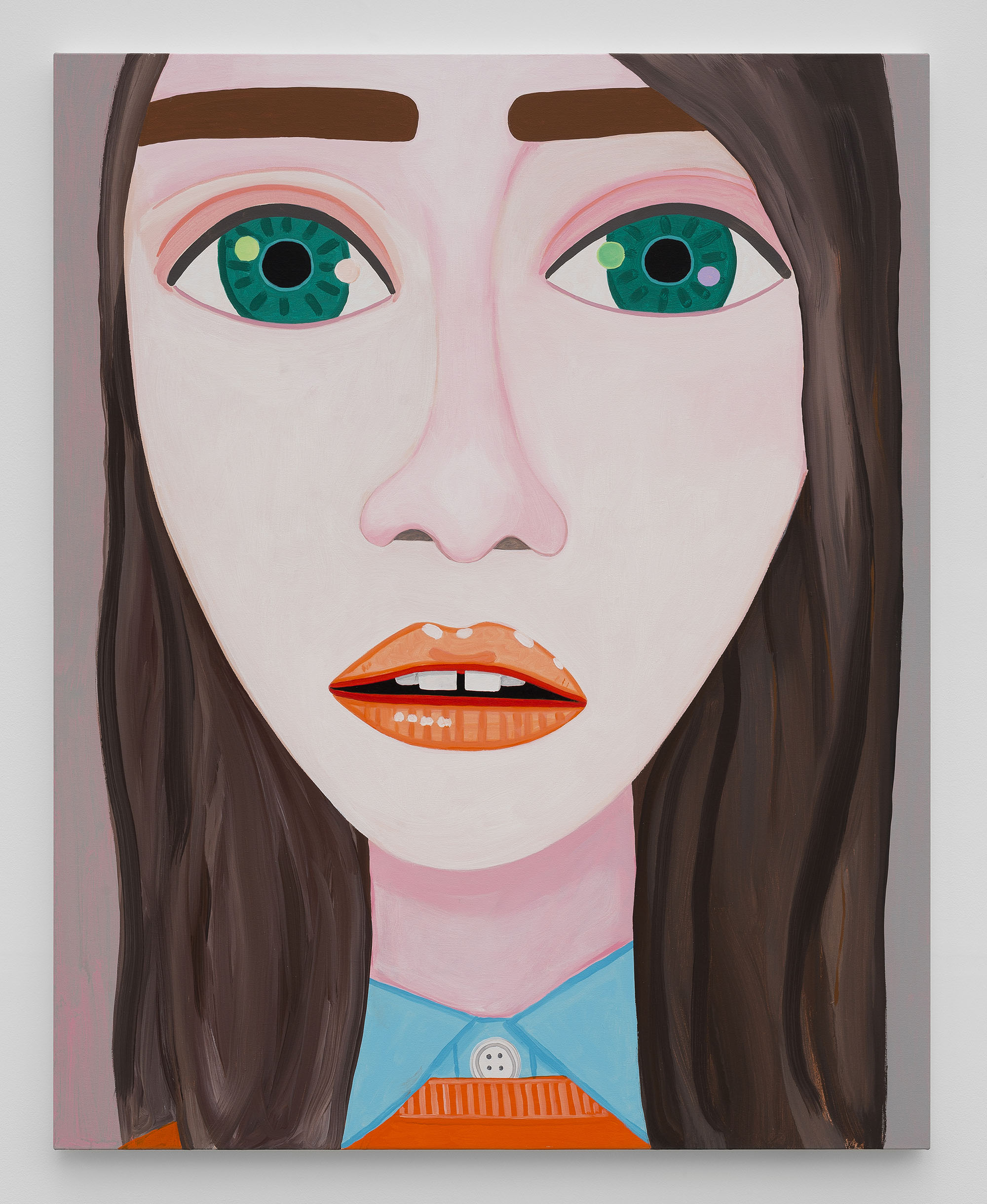


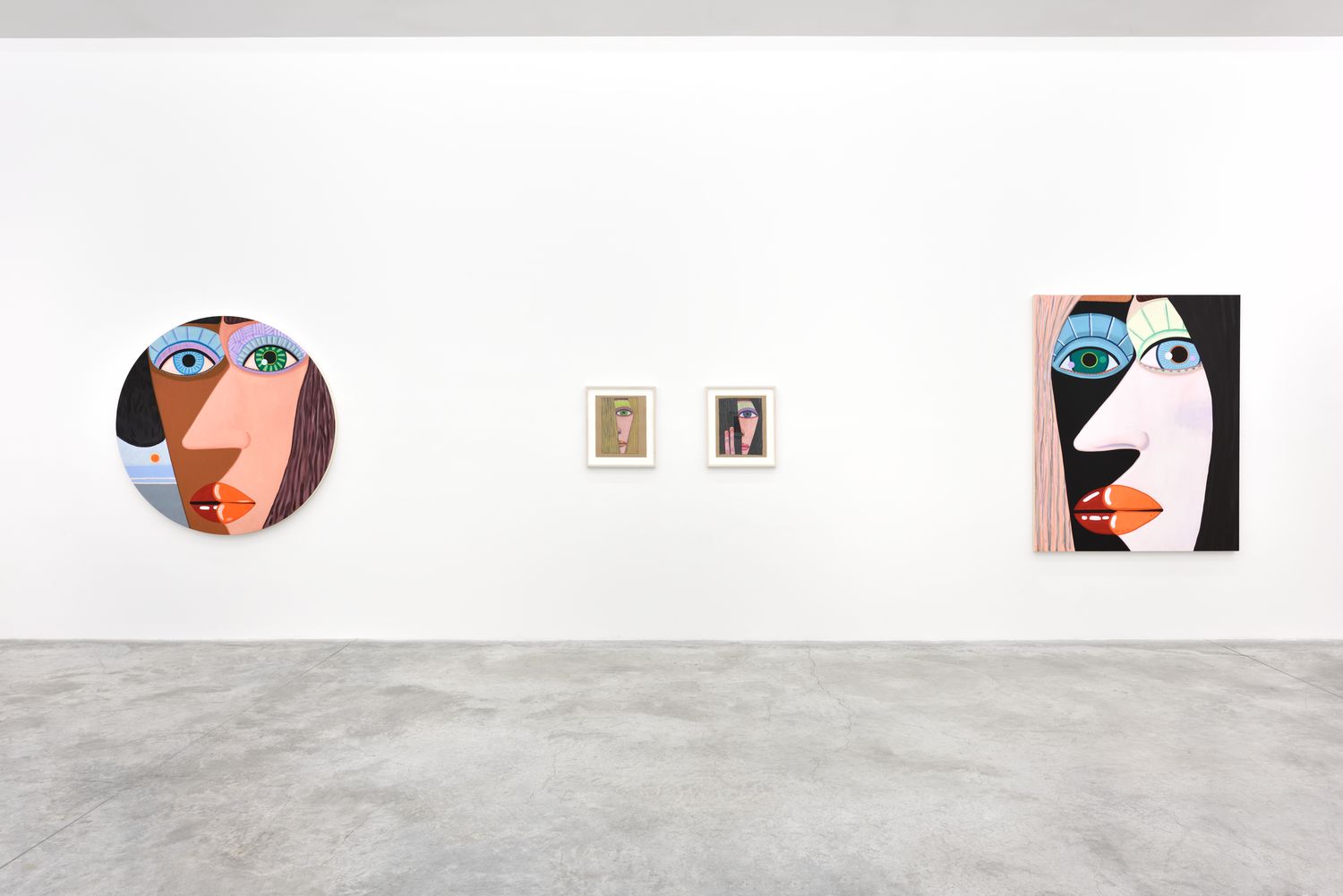
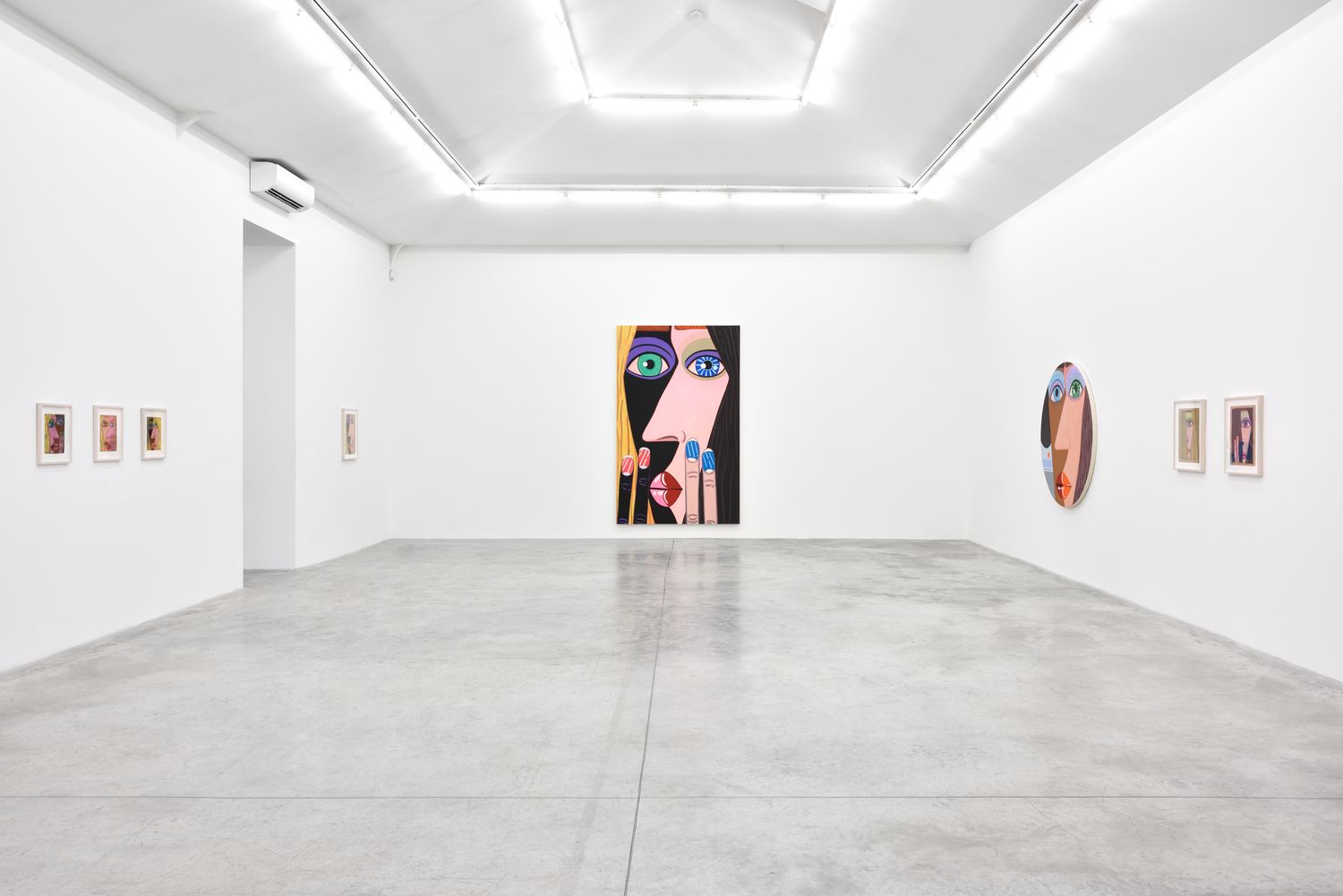


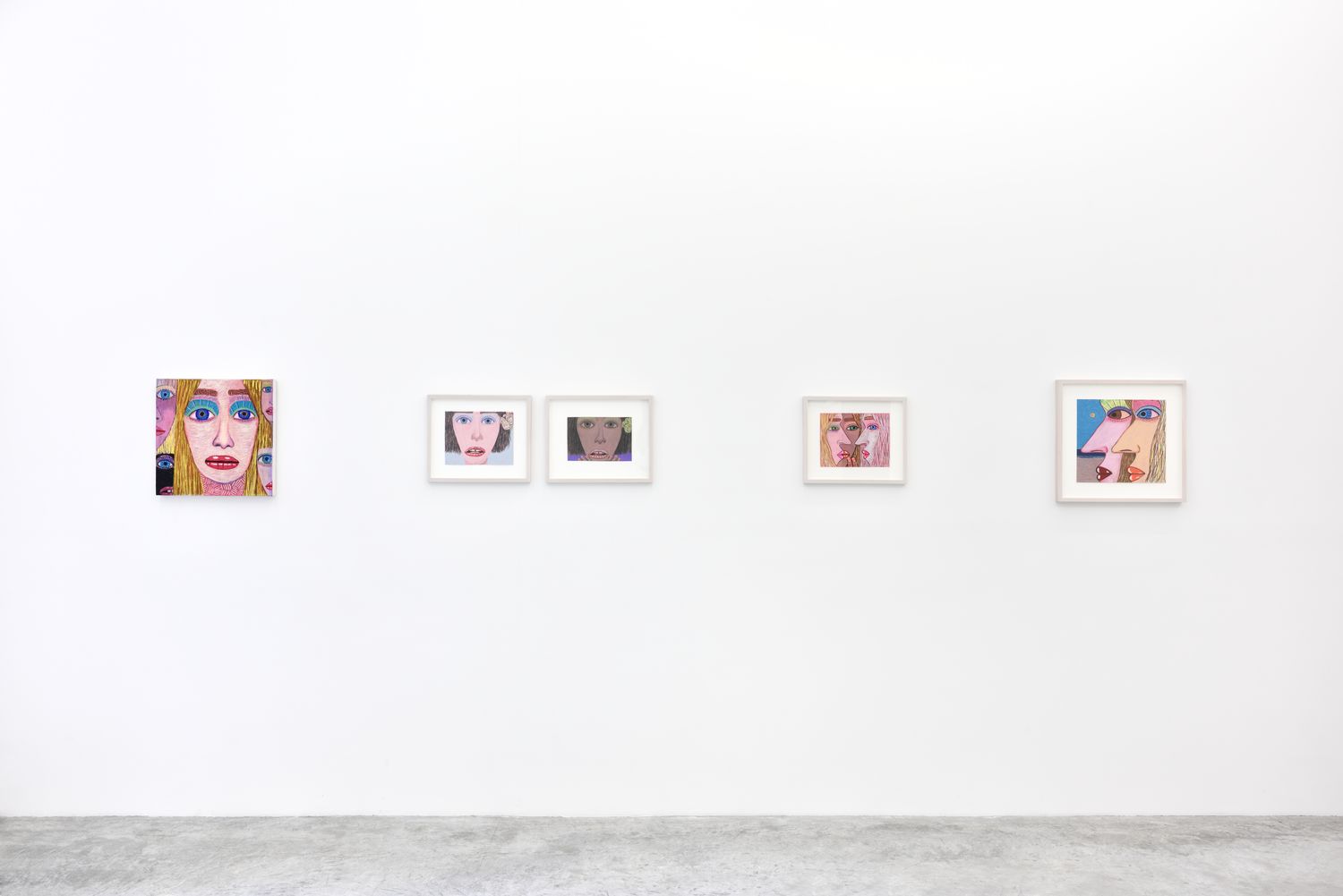



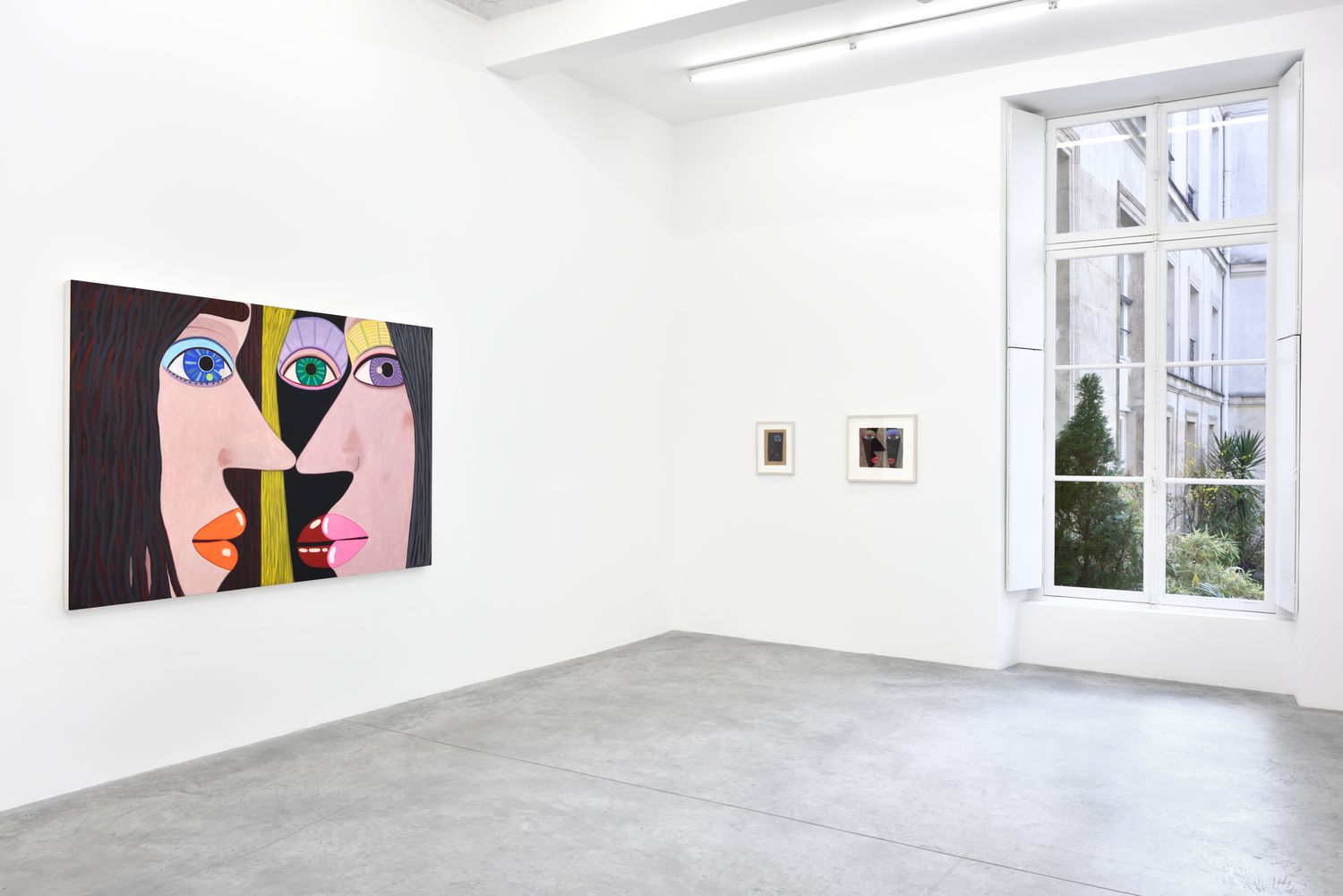


Courtesy of the artist and Almine Rech
Photo: Rebecca Fanuele
Fugue
Brian Calvin
Almine Rech
9 March 2019 - 6 April 2019
More details on: https://www.alminerech.com/exhibitions/5466-brian-calvin
*
"A few times every week people ask, ‘What do you paint?’ and I answer ‘People’. I didn’t try to create these iconic characters, they kind of developed slowly over time, and then they were just there. Sometimes I can feel pretty ambivalent about how some of them look. Recently I think they are taking a different turn and they’re starting to have a more naturalistic quality again. But certainly the kind of bigger eyes, bigger lips, so simplified, it sounds ridiculous but it wasn’t intentional. By stripping things away and not looking at real people, just making the painting, just going back and forth, they kind of developed, and then I wanted to paint the universe they inhabit. I think it’s one reason why for someone like Wesley, or William Copley – who became influential later – what could be called style seems to be an organic one that comes I don’t quite know why because they don’t look natural, but then all you do is kind of inhabit that universe and all of the innovation and stuff comes from within that closed system. As opposed to, you know, artists who every few years develop an all-new line. It might be very exciting but that’s not how my brain works. I keep finding what feels like new life in repetition, falling deeper down the rabbit hole." as Brian Calvin told me himself a few years back [1]. The new series of paintings and drawings comprising his third exhibition at Almine Rech – the second in Paris – is very much in line with this. The names of John Wesley and William Copley, two painters of the last century exposed to the tail end of surrealism and early days of Pop Art, provide some background about the highly diverse inspiration of his painting, which is actually very difficult to pigeonhole. To these, one could easily add the names Piero della Francesca, Matisse, Philip Guston, Balthus, Alice Neel and Mondrian. Both figurative and abstract, Brian Calvin’s painting clearly expresses his desire to be neither one nor the other, but rather both at the same time. His multiple pictorial strategies borrow from the history of both in equal measure, with references to markedly varied pictorial currents: in truth, it borrows from the entire history of painting or, at the very least, from its true inventors. Calvin’s painting is the kind that is looking for solutions.
Calvin evokes the painting of William Copley (1919-1996), father of Claire Copley who ran a gallery in New York City from 1973 to 1977. This was where, in 1974, Michael Asher held an exhibition consisting in getting rid of the wall separating the gallery’s exhibition space from its back office, thus placing the foreground and background, the sale and exhibition of art on the same plane. By chance, of course, Brian Calvin’s new paintings work in the same way from a technical point of view: they cancel the difference between foreground and background. Unlike photography, painting has no issue with depth of field and everything can be evenly focused. Pre-teenage girls, their gaze lost in a void greater than themselves, have in these new paintings given way to the faces of more mature women, framed so tightly that there is no “off-screen”. Their noses, obviously spared by plastic surgery, form triangles that structure the compositions, as do their eyes like so many disks; their fingers form verticals and their fingernails small, oblong, coloured surfaces punctuate the whole. A profile in the foreground reveals a full-frontal portrait in the background, superimposed with an air of confidence reminiscent of both Picabia’s Transparencies and Georges Méliès’ special effects – sometimes even creating the illusion of Picasso or Braque’s analytical Cubism. Calvin had already experimented tight frames including two or three faces, as in Group Smoke (2010), Heads See (2006) or Smoke Breaking (2010), and more recently in last year’s exhibition of his work by New York’s Metropolitan Opera [2] on the occasion of his Così Fan Tutte; here, he further radicalizes the “trompe-l’oeil” created by close-ups, as no particular situation suggests any kind of surrounding landscape or decor.
Group Thinking (2019), one of the paintings in the exhibition, works like this: two characters provide the composition with three eyes (blue, green, brown), two noses, three pairs of fingers and as many blue, green and pink nails. The eye – of the beholder – struggles to distinguish what belongs to each of the characters, recomposing various options in real time, including the possibility of a modern hydra with three differently coloured eyes: even more heterochromia than David Bowie! It will find that there is no precise representation, just an uncompromising composition. In fact, most of Brian Calvin’s new paintings seem to follow a composition splitting the canvas into four parts defined by median vertical and horizontal lines: simply take the upper part of the painting – here, three eyes – and the lower part, divided as forcefully as Barnett Newman would by the verticals formed by the fingers, punctuated by the mouths and their shapes; finish with the right-hand, then the left-hand parts, each forming a face.
This is an exciting aspect of Calvin’s work: from one painting to the next, variations are sometimes minimal, as if he had merely made a few minor touch-ups on a finished work, albeit with obvious consequences. "For someone doing non-representational, non-figurative work or abstract work, these slight tweaks seem very natural. With Mondrian, for example. But when you’re adding an image or using it in certain way that is calling out for attention, for some reason it seems so much more peculiar. It feels peculiar when I do it, but I’m also thinking, so many people who don’t deal with representation, that’s really what they are doing" says Calvin, who also told me he uses his smartphone’s built-in camera to anxiously document every step of a painting’s creation. "Each stage of a painting, if you want to move forward, you have to destroy it. Now you can have these endless snapshots which sometimes allows me, as a painting develops, at a certain you think “Should I develop it this way? Or that way?” " In this way, Calvin explores the multiple possibilities of a “decision tree”, a ramified representation of multiple-choice consequences, as featured in Black Mirror: Bandersnatch (2018). Here, the point is not to offer the viewer an illusion of interactivity, but for the artist to avoid endowing a single painting with the power to resolve a formal project.
The large triptych displayed in the exhibition is almost 5 metres long – a format which, as far as I know, Calvin had never used before, its size is also unprecedented – and it radicalises and develops the quest for internal rhythm on the painting’s surface, a key element to understand this work bordering on formats used by abstract American painters in the '60s. The triptych, called Fugue (2019), shares its title with the exhibition and further confirms its rhythmic dimension: a fugue is a musical genre that makes use of the principle of imitation and relies on a constant number of voices – for Calvin, characters. For the artist, the highly unusual painting serves, in his own words, to “slow down the pace of reading”; the series of drawings that completes the exhibition probably contributes to this by other means. For some years now, he has reverted to drawing, which had helped to structure his artistic practice in the '90s. Much more than mere studies or sketches – although they naturally influence his paintings, nowadays mostly done in acrylic – these pastel drawings add further qualities and sources to his painting’s ambitions – Robert Crumb comes to mind. Their more spontaneous execution seems to allow Calvin to give substance to yet more branches of his “decision tree”.
Éric Troncy
Translated by Alexandre Carayon
[1] Éric Troncy, “Interview with Brian Calvin”, Frog 15, November 2015.
[2] Brian Calvin, Così Fan Tutte, Met Opera, Lincoln Center, New York, Jan. 25 – Mar. 31, 2018.



